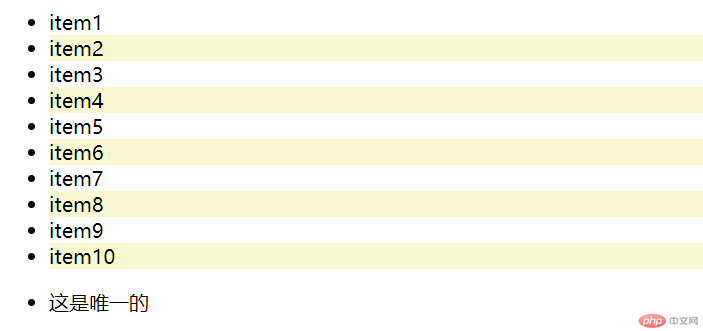Correction status:qualified
Teacher's comments:



内部样式是通过 style 标签引入的,这种样式导入仅在当前页面适用,一旦跳转到其他页面,想要引入当前页面的样式还得重新用 style 标签导入重新写一遍,这样会形成代码冗余。
页面样式示例:
<h1>这是一个测试标题</h1>
<style>
h1 {
color: lightblue;
border: 1px solid;
}
</style>
浏览器效果如下:

外部样式是使用 link 标签引入的已经写好的 css 样式表。它适用于所有引入了这个 css 样式表的 html 文档。
使用同一个页面样式示例,仅是将 style 标签中的 css 样式代码重写到一个 css 文件中,然后使用 link 标签导入就好。
示例:
<link rel="stylesheet" href="style/style.css" />
行内样式的话,它有点类似私人定制的意思。它的使用范围是仅限于当前页面的特定元素,使用 style 属性去定义。
样式示例:
<h1 style="border: 1px solid #000">这是一个测试标题</h1>
样式案例:
p {
background-color: lightblue;
}
样式案例:(此处的 class 是 class 属性的值)
.calss {
color: lightblue;
}
样式案例:(此处的 id 是 id 属性的值)
#id{
border: 1px solid #000;
}
选择范围是:所定位的标签下的所有后代标签
样式案例:
ul li {
background-color: lightgoldenrodyellow;
}
选择范围是:所定位标签的子标签
样式案例:
ul > li {
color: red;
}
选择范围是:与所定位标签紧邻的之后的第一个兄弟元素
样式案例:
.a + li {
background-color: lightgreen;
}
选择范围是:与所定位标签紧邻的之后的所有兄弟元素
样式案例:
.a ~ li {
background-color: yellow;
}
使用 “:nth-of-type(an+b)” 以及其衍生物可以匹配到页面内任意一个位置的元素(an: 起始点; b:偏移量)
以以下 html 代码为示例
<!DOCTYPE html><html><head><meta charset="UTF-8" /><title>伪类选择器</title></head><body><ul><li>item1</li><li>item2</li><li>item3</li><li>item4</li><li>item5</li><li>item6</li><li>item7</li><li>item8</li><li>item9</li><li>item10</li></ul><ul><li>这是唯一的</li></ul></body></html>
此时的 a 为 0,b 是要匹配到的位置
示例:(匹配到第三个 li 元素)
ul li :nth-of-type(3) {
background-color: lightgoldenrodyellow;
}
浏览器效果:

此时 a 不为 0,按照所选择的规则适当的改变 a 的值
示例:(匹配第三个及之后的所有元素)
ul li :nth-of-type(n + 3) {
background-color: lightgoldenrodyellow;
}
浏览器效果:

如果想只选中前两个元素,除了用添加 class 属性以外还可以用 nth-of-type(an+b),此时的 a 为-1,所选取的内容为偏移量之前的所有内容
示例:(匹配前两个元素)
ul li:nth-of-type(-n + 2) {
background-color: lightgoldenrodyellow;
}
浏览器效果:

当一列元素特别多无法知道具体数值,但是想定位到尾部元素的时候用这个方法,原理和 nth-of-type(an+b)相同,不过是要反过来理解。
示例:(匹配最后一个元素)
ul li:nth-last-of-type(-n + 2) {
background-color: lightgoldenrodyellow;
}
浏览器效果:

示例:(选择偶数位置的元素)
ul li:nth-of-type(even) {
background-color: lightgoldenrodyellow;
}
浏览器效果:

ul li:only-of-type {
background-color: rgb(183, 221, 247);
}
浏览器效果: